In the spring of 1990, George H. W. Bush defended his decision to ban broccoli from Air Force One: “I do not like broccoli. And I haven’t liked it since I was a little kid and my mother made me eat it. And I’m President of the United States, and I’m not going to eat any more broccoli!”
Sensing a PR opportunity, the United Fresh Fruit and Vegetable Association, a California trade group, sent 10 tons of broccoli to the White House, which Bush instantly donated to local food banks. The Campbell Soup Company sponsored a recipe contest for Woman’s Day magazine titled, “How to Get President Bush to Eat Broccoli.” (The winning recipe, Broccoli Lemon Sauce, which included a can of Campbell’s Cream of Broccoli soup and half a cup of mayonnaise, will not be included in this article.)
The president proved out of touch with the rest of the country, which was growing increasingly fond of broccoli. According to the US Department of Agriculture, broccoli consumption more than doubled between 1980 and 1988. According to one broccoli executive, the publicity Bush’s anti-broccoli rant generated increased sales of the vegetable by 10%.
But don’t get too excited about broccoli’s success. In its best year ever (2016), the average per capita consumption was only 7.5 pounds. Given how nutritious, delicious, and versatile it is, that constitutes a lot of room for improvement. In this article, my mission is to proclaim the many benefits of the beautiful tree-shaped vegetable — and to see if we can’t double that number again.
If you, like the former president, grew up being forced to eat your broccoli, it’s understandable that you might harbor negative associations. So in addition to telling you why broccoli is so good for you, I’ll reveal some of the tastiest ways to prepare it (and none of them require canned soup).
The History of Broccoli
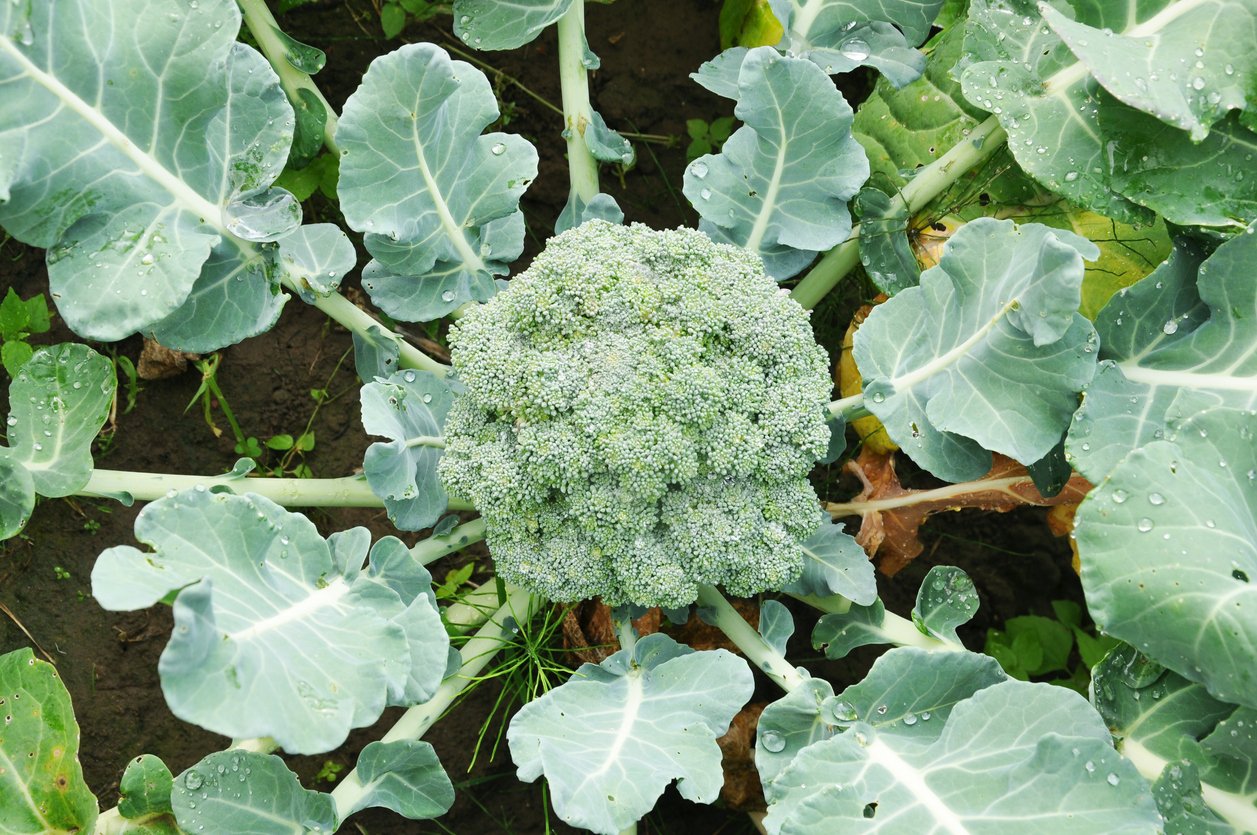
Broccoli, or Brassica oleracea italica, was domesticated from wild cabbage, likely by the Etruscans, an advanced civilization that was really into the afterlife, judging from how comprehensively they stocked their tombs. Luckily for us, they were also into this life, as evidenced by their horticultural genius, which inspired later civilizations to cultivate other members of the brassica family, including cauliflower, cabbage, kale, kohlrabi, and Brussels sprouts. (Fun fact: the word “horticulture” derives from the Etruscan goddess of gardening, Horta.)
The Etruscans were also accomplished mariners, which is how broccoli spread from what is now Italy throughout the Mediterranean basin, reaching as far as Greece and Phoenicia (modern-day Lebanon).
Broccoli was introduced to England in the mid-1700s with the name “Italian asparagus,” presumably to provide a familiar point of reference for those unfamiliar with Roman cuisine. It wasn’t until immigrants from southern Italy brought broccoli to the United States in the 1920s that it became a popular food in the west.
Broccoli is essentially a large edible flower. Its name comes from the Italian word broccolo, which means “the flowering crest of a cabbage,” as well as the Latin word brachium, which means branch, shoot, or arm. There is no known etymological connection between the vegetable and Lou Brock, the hall of fame left fielder for the St. Louis Cardinals.
Types of Broccoli
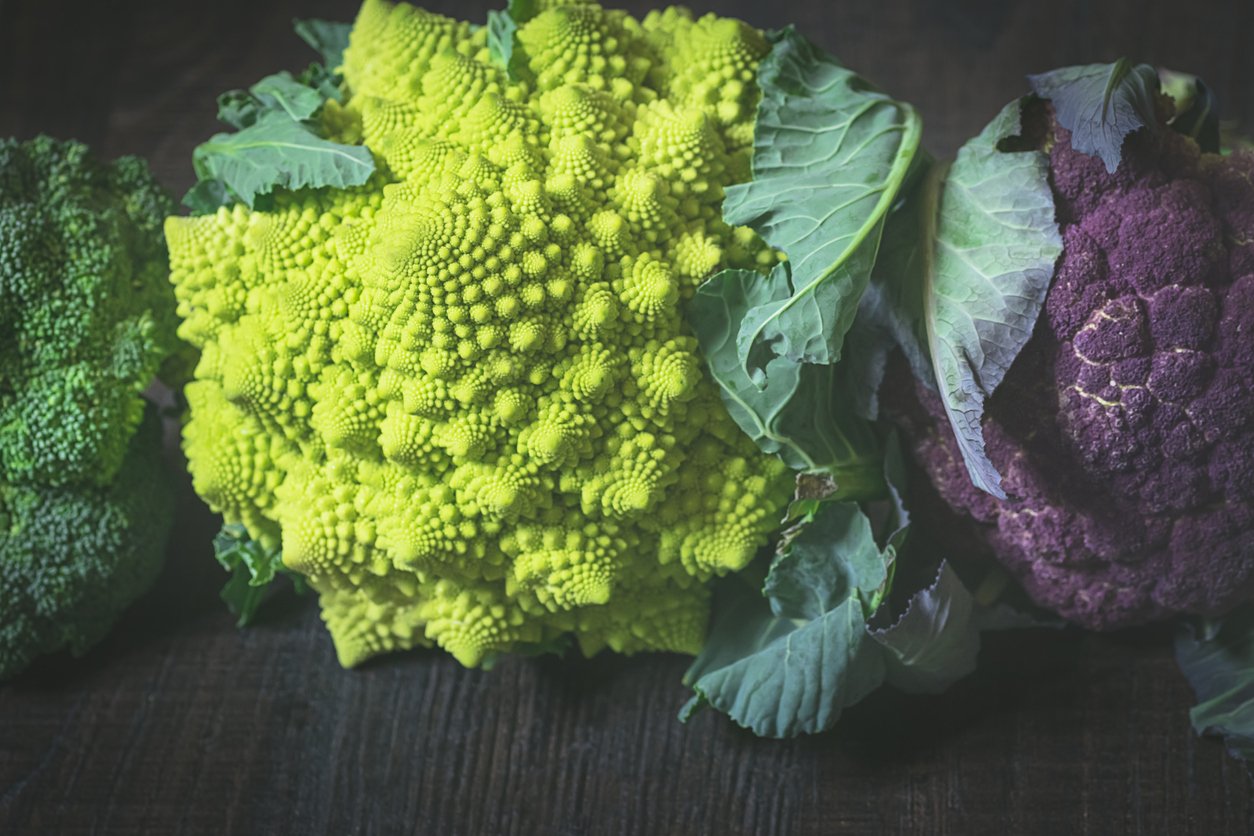
While you might be most familiar with Calabrese broccoli, the head variety with the thick green stalk, there are many other kinds of broccoli. Other sprouting/head cultivars of broccoli include Green King, Green Magic, and Tendergreen (bonus points for guessing their color), as well as Waltham 29, a cool-weather variety developed by University of Massachusetts researchers in the 1950s. (When I hear “Waltham 29,” I picture a top-secret laboratory full of alien heads of broccoli that the government doesn’t want us to know about.)
Romanesco broccoli has tightly packed, cone-shaped spirals and a bright yellowish-green color — regarding one at close range will either give you insight into the fractal nature of the universe or make your eyes cross.
And then there’s broccolini, which sounds extremely cute, and deservedly so, as it’s actually a love child between broccoli and kale. For cute overload, you may refer to it as “baby broccoli.”
Chinese broccoli, also known as Chinese kale, is known for its large leaves and robust stems.
Purple broccoli achieves its distinctive hue not via artificial dyes, but through natural anthocyanins.
And bright green broccoli raab (rapini) resembles broccoli that decided that florets aren’t so important, and so produced just a few amid buds, juicy stalks, and bitter leaves. It’s technically a member of the turnip family but still shows up at all the broccoli family reunions.
If you’re a gardener with a cool growing season of decent length, here’s a list of broccoli varieties you can plant.
Broccoli Nutrition Facts
Broccoli is a good source of fiber and water, two nutrients that help you feel full. One cup of broccoli provides fewer than 30 calories, which is why, if you went on an all-broccoli diet, you’d need to eat at least a pound an hour just to meet your minimum caloric needs.
Broccoli is also a good source of vitamins C, K1, and A, as well as folate (and other B vitamins), potassium, iron, manganese, and calcium. It also provides around 2.5 grams of protein per cup. Back to that implausible all-broccoli diet — if you consumed 1,500 calories of broccoli, that would also give you 125 grams of protein, which is more than twice the US RDA for most people. (But for the record, I don’t recommend trying to get all your calories from broccoli — or any other food, for that matter.)
Part of the magic of broccoli resides in its specialized health-promoting compounds. The two most widely studied of these are glucoraphanin and glucosinolates. As part of the digestive process, our bodies convert glucoraphanin into sulforaphane, a compound known to fight many types of cancer. And glucosinolates are sulfur-containing chemicals that give broccoli its pungent smell and provide many of its benefits.
Broccoli Health Benefits
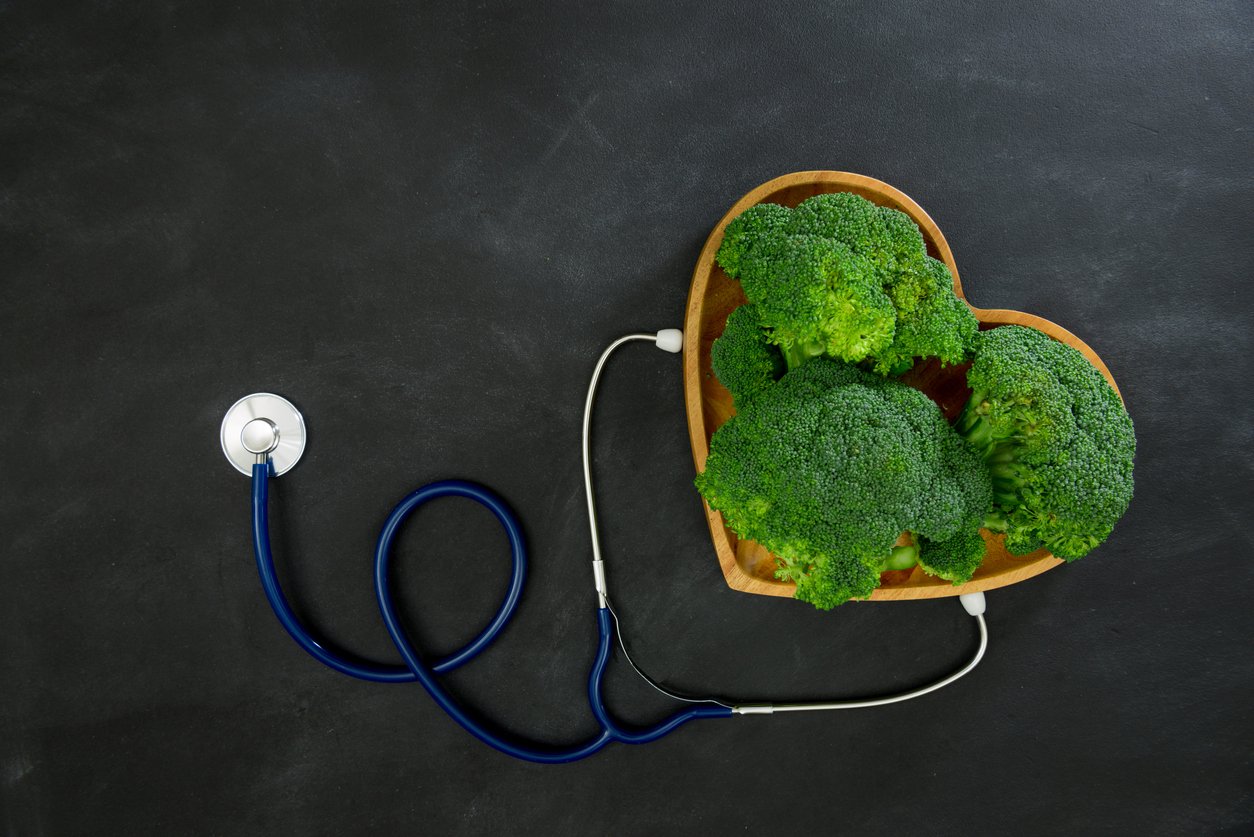
With that powerful nutritional profile, broccoli provides a wide range of health benefits to those who partake.
One of the ways broccoli appears to strengthen so many different bodily systems is through its antioxidant effects on cellular health. There are high concentrations of antioxidants in the florets, but also in broccoli leaves and stems, so don’t throw those out when you chop your broccoli for a stir-fry or side. And while raw broccoli provides the biggest hit of glucosinolate, steamed broccoli appears to deliver more bioavailable antioxidants.
Does Broccoli Help You Lose Weight?
Possibly. For those looking to shed weight and keep it off, the high water and fiber content of broccoli can help promote satiety and reduce overeating. (Besides, when was the last time you heard of someone diving into a tub of broccoli after a breakup?)
But broccoli also promotes healthy weight in more subtle ways. Obese mice who were given broccoli microgreens juice lost a significant amount of body fat compared to controls — an outcome possibly caused by positive changes in the makeup of their gut microbiota. (Our view on the use of animals in medical research is here.)
Broccoli and Blood Sugar
A 2013 literature review found that consuming broccoli sprouts improved around a dozen different metabolic and oxidative stress markers in people with type 2 diabetes. A 2012 clinical trial out of Iran showed that broccoli sprout powder decreased insulin resistance in type 2 diabetics, which is thought to be one of the root causes of the disorder. Glucoraphanin appears to be one of the heroes here, reducing obesity-caused inflammation and accelerating the burning of white adipose tissue (that’s fat to you and me).
If you don’t have access to broccoli sprouts (they’re actually quite easy to grow on a windowsill in your kitchen — see our sulforaphane article for step-by-step instructions), don’t despair. Regular old broccoli is still a blood sugar-balancing superstar, possibly thanks to its fiber that may help regulate blood sugar levels and speed food through the digestive system.
Broccoli and Heart Health
Eating green cruciferous vegetables like broccoli appears to lower your odds of developing heart disease. A 2016 meta-analysis quantified that risk reduction as almost 16% when comparing the groups that ate the most and the least greens.
If you’re consuming broccoli to prevent heart disease and you’re not a fan of eating it raw, I’ve got some good news for you. It turns out that steaming broccoli (as well as other veggies like kale, collard greens, and cabbage) actually increases its ability to lower LDL cholesterol.
Broccoli and Cancer
Broccoli consumption may reduce your risk for certain types of cancer. And while all leafy greens, and all fiber-rich vegetables, have anticancer benefits, it’s time to shine a direct spotlight on broccoli itself. Broccoli’s high levels of sulforaphane cause it to act against the formation of cancer at the molecular level by reducing oxidative stress. Some researchers are beginning to use broccoli (and broccoli sprouts in particular, which contain 20–100 times higher concentrations of glucosinolate, sulforaphane’s precursor, than adult broccoli) as an adjunct to chemotherapy. It appears that sulforaphane can conduct multipronged attacks on cancer cells (including inducing apoptosis, which is basically convincing carcinogenic cells to kill themselves for the sake of the organism).
There’s evidence for the healing power of cruciferous veggies, including broccoli, on a number of specific cancers. A case-control study conducted in the 1990s found that high consumption of broccoli, cauliflower, brussels sprouts, and other cruciferous veggies appeared to lower the risk of stomach cancer by 40–50%.
Other research has found similar benefits of broccoli consumption in the prevention of cancers of the breast, prostate, kidney, bladder, and colorectal system.
Is Broccoli Good for Your Eyes?
Broccoli is rich in the carotenoids lutein and zeaxanthin, as well as beta carotene (which your body converts to vitamin A), all of which are necessary for eye health. Studies show that these compounds in particular protect against maculopathy and cataracts, macular degeneration, and night blindness.
Is Broccoli Good for Your Bones?
Many of the nutrients in broccoli also work together to support skeletal health, including calcium, potassium, phosphorus, and vitamin K. Click here for more on how to prevent osteoporosis and promote bone health with food.
Downsides & Side Effects of Broccoli
Most people can consume broccoli to their heart’s delight, but there are a few cautions and potential contraindications.
Medication Interactions
First, because broccoli is high in vitamin K, it may interfere with certain blood-thinning medications when eaten in large quantities. Food Revolution Network Summit presenter Joel Furhman, MD, advises against avoiding green vegetables even if you are taking warfarin (brand name Coumadin). But you may want to check with your health care provider or registered dietitian to make a plan for eating broccoli and other vitamin K-containing foods if you’re on such a blood thinner.
Broccoli Fiber
Broccoli is high in fiber, as we’ve seen, and fiber represents serious work (as well as benefits) for your digestive system. If your gut is in good shape, which means teeming with beneficial microbes that do some of the heavy digestive lifting on your behalf, you should be able to handle large quantities of fiber with ease. If you’re not used to eating a fiber-rich diet, it may be preferable to start slow and gradually increase your fiber intake. This can reduce digestive side effects of a sudden influx of fiber, including bloating, constipation, and gassiness.
Broccoli Allergy
Rare cases of broccoli allergy have been reported. Broccoli contains proteins that are similar to those found in the pollen of mugwort flowers (a wild-growing and cultivated medicinal plant in the daisy family). If you feel your lips or tongue tingle after eating broccoli (or experience more severe anaphylactic symptoms), you may be suffering from broccoli-induced pollen-food allergy syndrome.
How to Prepare Broccoli
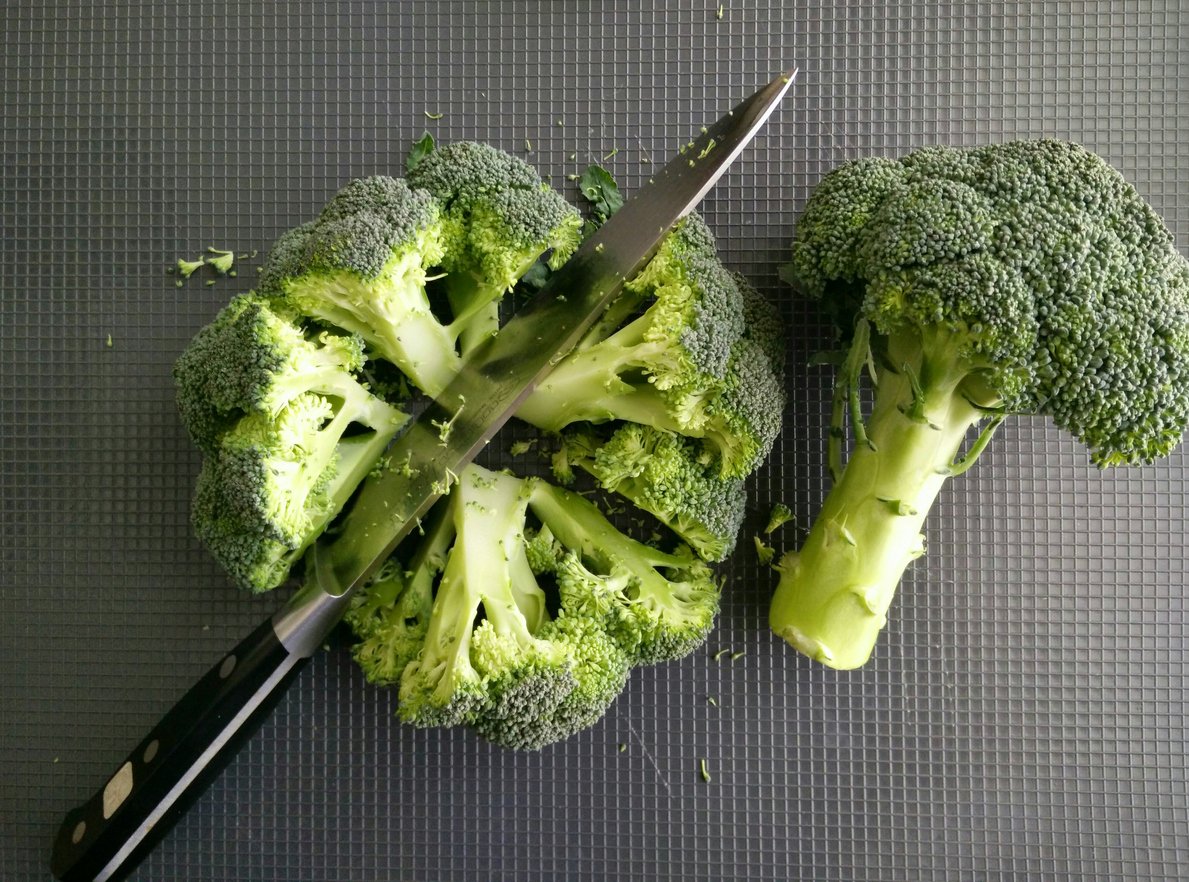
The biggest downside to broccoli, though, is that lots of people aren’t crazy about the taste because they were made to eat soggy or poorly prepared broccoli before they could get dessert. The good news is that there are ways to prepare broccoli that bring out its deliciousness and can convert most haters to eaters (which is only a one-letter difference, after all).
Edible portions of broccoli include the stems as well as the florets. The thick, 1–2 inches of the stem at the bottom is generally too thick and woody to eat, so you can cut that part off. But for maximum nutritive benefit (and value per pound), definitely eat the stems of broccoli. If they’re too thick, you can peel off the tough outer skin with a knife or a straight-blade vegetable peeler, like a carrot peeler.
You can eat broccoli raw or cook it by steaming, sautéing, roasting, boiling, blanching, or air frying it. Beware of overcooking, however. It will become dark and soggy, and lose many of its water-soluble vitamins and minerals.
What’s the best way to cook broccoli? Blanching can help preserve micronutrients and reduce bitterness. To blanch broccoli, briefly immerse it in lightly salted boiling water for 30 seconds, and then immediately plunge it in cold water to stop the cooking process.
Ways to Use Broccoli
Broccoli is incredibly versatile when it comes to methods of preparation. And you can add broccoli to many different types of dishes, including:
- Soups, chopped into veggie soup or pureed into creamy broccoli soup
- Stir-fries
- Mixed green salads
- Homemade veggie burger patties or veggie nuggets
- Breakfast scrambles
- Casseroles
- Pasta dishes
- Pizza (finely chopped on top)
- Baked potato/sweet potato (chopped on top)
- Served raw with hummus or another dip
Buying and Storing Broccoli
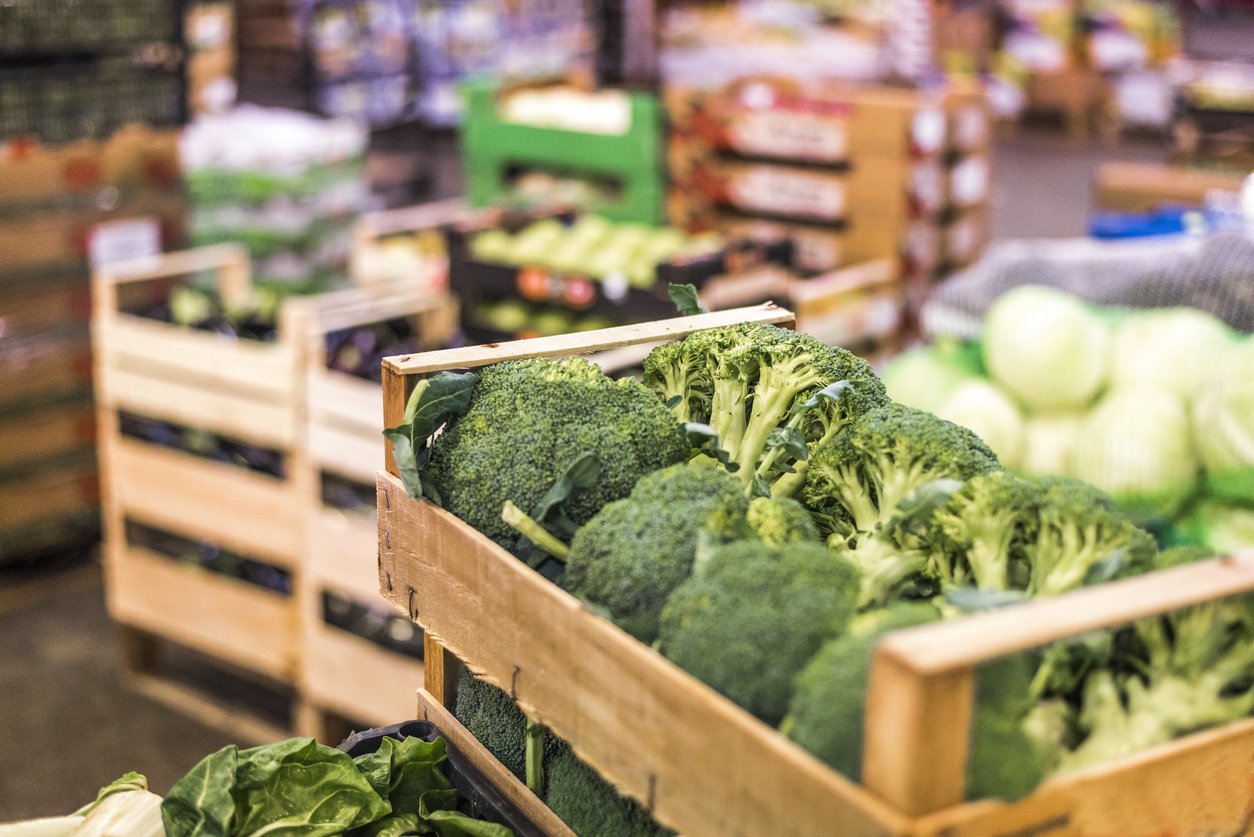
You might be able to buy it fresh year-round, but in the northern hemisphere, broccoli season runs from October through April. You can also choose frozen broccoli, which can be just as nutritious as fresh — sometimes even more so. It’s typically flash frozen within minutes of harvesting, while fresh broccoli often spends days in trucks and warehouses before reaching the produce section of a market.
If you’re buying broccoli heads, choose those with tight, deep green florets and a firm stalk. Avoid broccoli with a soft or bendable stalk or yellowish florets.
Keep raw broccoli dry and unwashed until you’re ready to use it, as moisture can wilt it as well as create an environment for mold and bacterial growth. If your broccoli came in a plastic bag, take the stalks out and place them directly in the fridge (you can store them in a paper bag or a produce drawer to minimize the fridge’s drying effects), using them within 2–3 days for optimal freshness.
If you’ve got more broccoli than you can use and don’t want to have to compost it, you can blanch and freeze the florets, which will keep for up to a year in an airtight bag in the freezer.
Broccoli Recipes
Broccoli is most certainly a winner in our eyes thanks to all the ways this tasty veggie can be included in delicious plant-based meals. If warm and comforting is your jam, then Cream of Broccoli Soup — our dairy-free take on a classic — can soothe and nourish you, body and soul. If you like broccoli that is perfectly crunchy and vibrant, Tofu and Broccoli Stir-Fry is packed with loads of nutrition, texture, and flavor, which makes it one of the best plant-based stir-fries around! Do you like your broccoli with a touch of umami flavor? Then opt for the Broccoli and Tomato Pasta Bake, which showcases the lean green veggie with comforting flavors and ingredients that will bring the entire family together.
1. Cream of Broccoli Soup
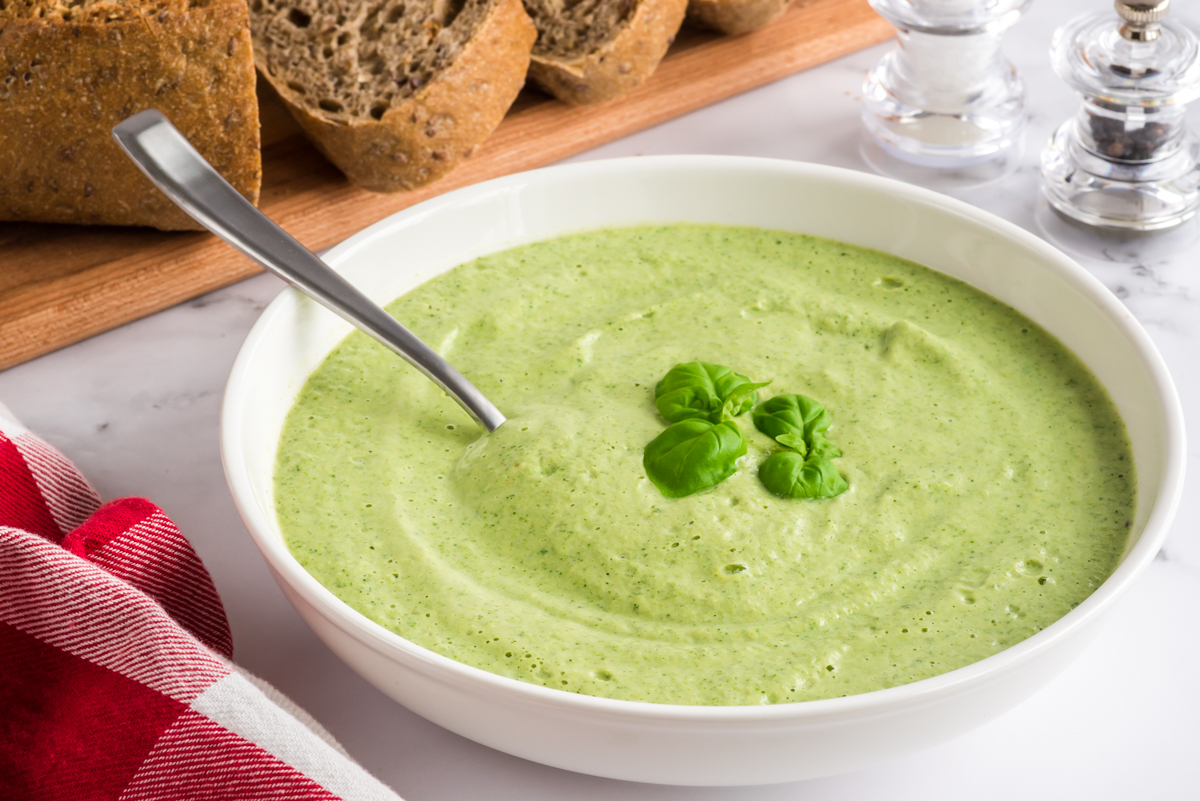
Broccoli doesn’t get nearly enough credit for all the ways it can be used in plant-based cooking, but it’s actually just as versatile (we’re looking at you cauliflower) as other cruciferous veggies. Take this comforting Cream of Broccoli Soup, for example, in which lean, green broccoli is both the base and the star. Cashews show up in a supporting role, giving this soup just the perfect amount of creaminess. This is one of those “make extra” recipes so you have it on standby for a nutritious meal in a pinch!
2. Tofu and Broccoli Stir-Fry
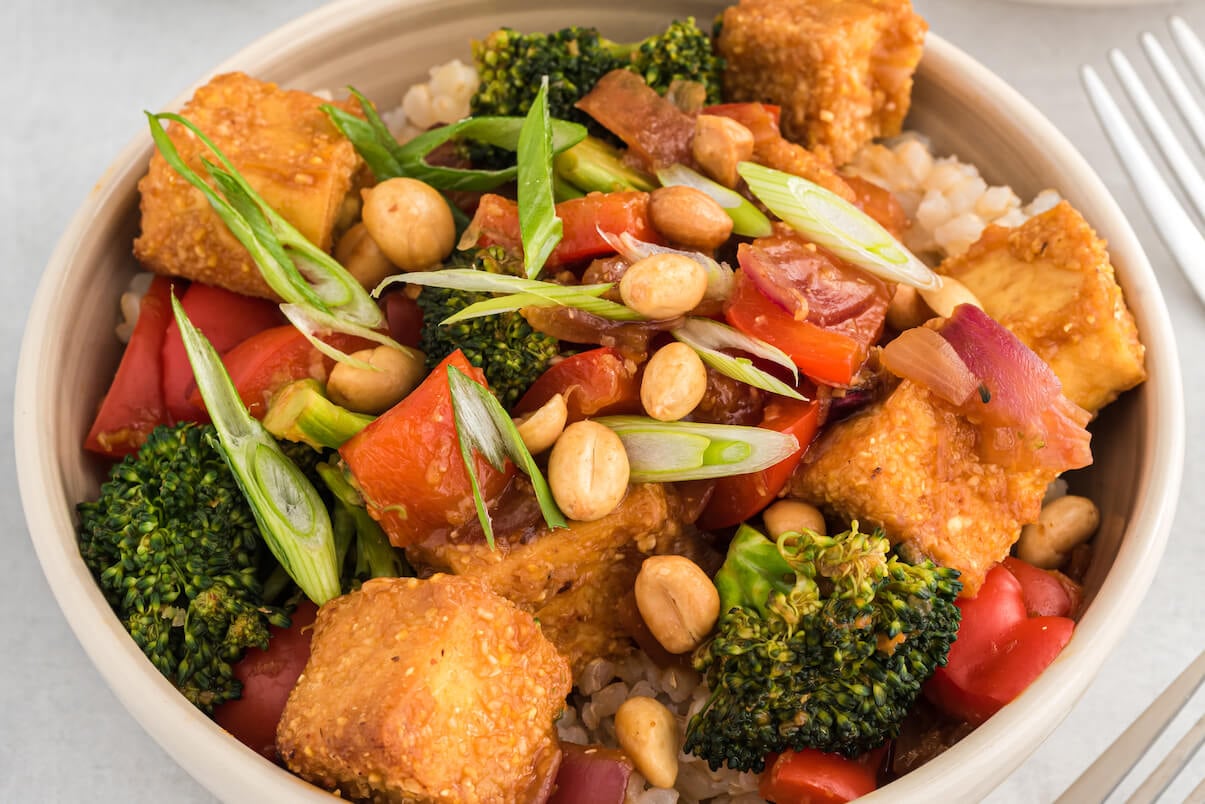
Broccoli is arguably the highlight of any good veggie stir-fry. And the best part about making a stir-fry at home is that you can add as much broccoli as you want! The crunchy-on-the-outside, soft-on-the-inside tofu, and slightly sweet and spicy stir-fry sauce are the perfect complements to this crisp superfood of a veggie. Remember that broccoli is a great source of vitamins C, K, and A, as well as folate (and other B vitamins), potassium, iron, manganese, and calcium. With so many nutrients, this broccoli-forward meal is one of the most nutritious (and delicious!) stir-fries around!
3. Broccoli and Tomato Pasta Bake

When you were growing up, do you remember your parents calling your beloved mac and cheese dish, mac and “trees” as a way to get you excited about eating the greens they “hid” in it? If so, this Broccoli and Tomato Pasta Bake might make you feel a bit nostalgic. If not, here’s a chance to add a new beloved dish to your repertoire. Plus, no convincing is needed with this scrumptious bake. Silky tofu ricotta, creamy cashew cheese, and bright green and perfectly cooked trees — I mean broccoli — make for an upscale pasta bake that the whole family will devour!
Broccoli Is Good for You!
Broccoli is one of the healthiest and most nutrient-dense foods on the planet (and perhaps the entire solar system, especially if it’s true about the moon being made out of cheese). Cruciferous vegetables like broccoli contain unique compounds such as sulforaphane — especially abundant in broccoli sprouts — as well as antioxidants, vitamins, and minerals that can help reduce the risk for numerous chronic diseases. Enjoy broccoli raw or cooked in a variety of ways as part of a whole foods, plant-based diet.
It’s time to celebrate broccoli for the healthy and delicious vegetable that it is — and has always been. Say it with me: “I scream, you scream, we all scream for broccoli!”
Editor’s Note:
If you’re looking for a convenient, research-backed way to get the benefits of sulforaphane, COMPLEMENT Sulfora is one of the most thoughtfully formulated options we’ve seen. Instead of attempting to stabilize sulforaphane (which is notoriously unstable), Sulfora provides glucoraphanin from broccoli seeds and myrosinase from mustard seeds, the two precursors your body needs to create fresh, active sulforaphane during digestion. This potent combination mimics what happens when you eat fresh broccoli or broccoli sprouts.
Each dose of Sulfora also includes complementary ingredients like kale extract, Brussels sprouts, camu camu, and quercetin for added antioxidant and immune support. It’s third-party tested for purity, packaged in a compostable pouch, and backed by a 100-day money-back guarantee. Click here to learn more and claim a special Food Revolution Network discount.
If you purchase through that link, COMPLEMENT will contribute a portion of the proceeds to support Food Revolution Network’s mission. (Thank you!)
Tell us in the comments:
- What was your first experience with broccoli? What did you think of it then?
- What’s your favorite way to prepare broccoli?
- Have you ever sprouted broccoli seeds (or other seeds)? If so, do you have words of advice or encouragement for others?
Feature Image: iStock.com/id-art



